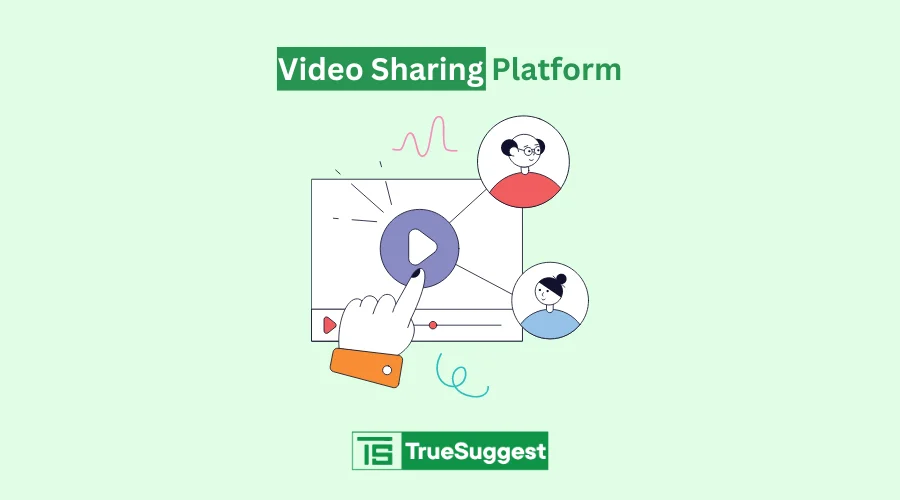Video Sharing Platform: A Comprehensive Guide

A video sharing platform is an online service that allows users to upload, view, and share videos. These platforms have revolutionized how content is consumed, offering a space for creators, businesses, and individuals to showcase their work or ideas. The evolution began with platforms like YouTube, which was launched in 2005, and has since grown into a diverse industry with multiple players. In the modern digital age, video content has become a dominant form of communication, entertainment, and marketing.
How Video Sharing Platforms Work
Video sharing platforms operate by allowing users to upload videos to their servers, where the content is processed and stored. The platform then streams these videos to viewers via content delivery networks (CDNs) to ensure fast and smooth playback. Videos are usually compressed to balance quality and file size. User interaction, such as likes, comments, and shares, is tracked, with analytics provided to creators to measure performance. Behind the scenes, cloud-based storage and bandwidth management are critical to handling large amounts of video data.
Key Features of Video Sharing Platforms
- User-Generated Content Upload: Users can upload videos in various formats, allowing a wide range of content types, including tutorials, vlogs, music, and more.
- Video Streaming and Playback: Videos are streamed over the internet, using technology like HTTP live streaming (HLS) or DASH for smooth playback.
- Sharing Options: Videos can be easily shared through social media, direct links, or embedding into websites, increasing reach and engagement.
- Content Discovery: Advanced algorithms recommend videos based on user behavior, while search features and categorization allow for easy navigation.
- Monetization Options: Creators can earn money through ads, subscriptions, or donations, making platforms a potential income source.
- Community Features: Platforms foster communities through comments, likes, shares, and subscribing to favorite channels, encouraging interaction between creators and viewers.
Popular Video Sharing Platforms
- YouTube: Launched in 2005, YouTube is the world’s largest video-sharing platform with over 2 billion active users. It offers monetization options like ads and memberships and serves as a go-to platform for content creators.
- Vimeo: Known for its high-quality, professional content, Vimeo offers a space for filmmakers and creatives to showcase their work. Vimeo emphasizes video quality and creative freedom.
- TikTok: Focused on short-form mobile videos, TikTok has exploded in popularity, particularly among younger audiences, and emphasizes viral trends and user engagement.
- Dailymotion: A French-based video sharing site, Dailymotion serves as an alternative to YouTube, offering diverse content but with a smaller audience.
- Twitch: Known for live streaming, particularly in the gaming community, Twitch also offers content in lifestyle, art, and music, emphasizing real-time interaction between streamers and viewers.
Types of Video Sharing Platforms
- General-purpose platforms: YouTube and Vimeo offer a wide range of content for all types of users, from casual creators to businesses.
- Niche platforms: Some platforms focus on specific content areas. Twitch is primarily for gamers and live streamers, while Skillshare focuses on educational videos.
- Social media-based video platforms: Instagram, Facebook, and TikTok integrate video sharing as part of a broader social media experience, blending entertainment with social engagement.
Monetization Strategies
- Ad Revenue: Platforms like YouTube allow creators to earn revenue through ads shown on their videos. Creators are paid based on views, ad interactions, and engagement.
- Subscription Models: Premium platforms offer ad-free versions for subscribers. Creators can also offer exclusive content to paid subscribers (YouTube memberships, Patreon).
- Affiliate Marketing: Influencers often use their reach to promote products and earn commissions from affiliate links, seamlessly integrating marketing with their content.
- Crowdfunding and Donations: Fans can support creators through platforms like Patreon, or directly on sites like YouTube via features like Super Chats or channel memberships.
Content Creators and the Role of Influencers
The rise of content creators and influencers has transformed the landscape of marketing and entertainment. Influencers, with large followings on platforms like YouTube and TikTok, collaborate with brands to promote products or services. Strategies for success on these platforms include consistent content uploads, niche targeting, and engaging directly with audiences. Influencers shape trends and often serve as a bridge between brands and consumers, particularly in fashion, beauty, gaming, and lifestyle sectors.
Video Sharing Platforms for Business
Businesses use video platforms for marketing, brand promotion, and customer engagement. Platforms like YouTube allow businesses to create ads, product demonstrations, tutorials, and behind-the-scenes content. Video marketing strategies include SEO-optimized titles and descriptions, engaging thumbnails, and leveraging analytics to track performance. Successful campaigns, such as Red Bull’s extreme sports videos or Apple’s product launches, demonstrate the power of video content in business strategy.
Challenges Faced by Video Sharing Platforms
- Content Moderation and Copyright Issues: Platforms must balance the need for free expression with preventing harmful or illegal content. Copyright infringement remains a significant challenge, as users may upload unauthorized content.
- Data Privacy Concerns: With increasing scrutiny on user data handling, platforms must comply with regulations like GDPR. Maintaining user trust while delivering personalized content remains a challenge.
- Competition and Platform Saturation: The growing number of creators has led to market saturation, making it harder for new content to gain traction.
- Monetization Struggles for Small Creators: While larger creators can profit from ads and sponsorships, smaller creators often struggle to make money due to the high competition for views and subscribers.
Future Trends in Video Sharing Platforms
- Growth of Live Streaming and Real-Time Interaction: Platforms are increasingly focusing on live streaming features, allowing real-time engagement between creators and audiences (e.g., Twitch, YouTube Live).
- Augmented Reality (AR) and Virtual Reality (VR) Integration: Future video sharing platforms may offer more immersive experiences through AR and VR technologies, enhancing video consumption and interaction.
- Increasing Personalization Through AI: AI-driven algorithms will become more sophisticated in delivering personalized content recommendations, improving user experience.
- Short-Form Content and Mobile Video Consumption: Platforms like TikTok have popularized short, bite-sized videos. Mobile-first video platforms are expected to continue growing, especially among younger audiences.
- Globalization and Regional Platforms: While global platforms like YouTube dominate, there is also growth in regional platforms (e.g., China's Bilibili), catering to local audiences with localized content and language.
Conclusion
Video sharing platforms have become integral to modern communication, entertainment, and business. They offer unparalleled opportunities for creators, brands, and audiences to interact, share ideas, and consume content. As technology evolves, the future of video sharing platforms will likely include more immersive, personalized, and real-time features, continuing to shape our digital world. Their impact on society, culture, and business will only deepen as video continues to reign as the dominant media form of the internet age.






























